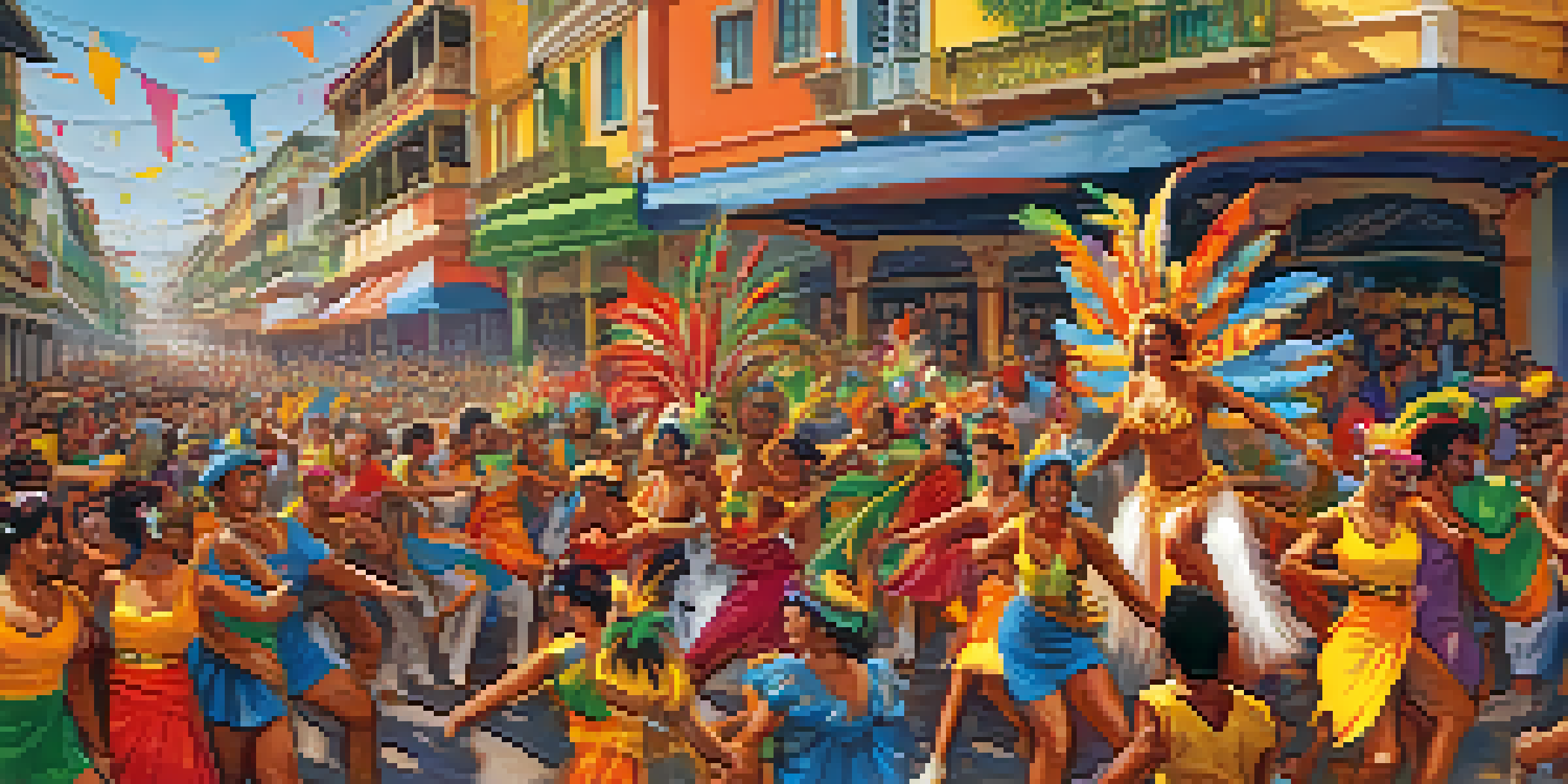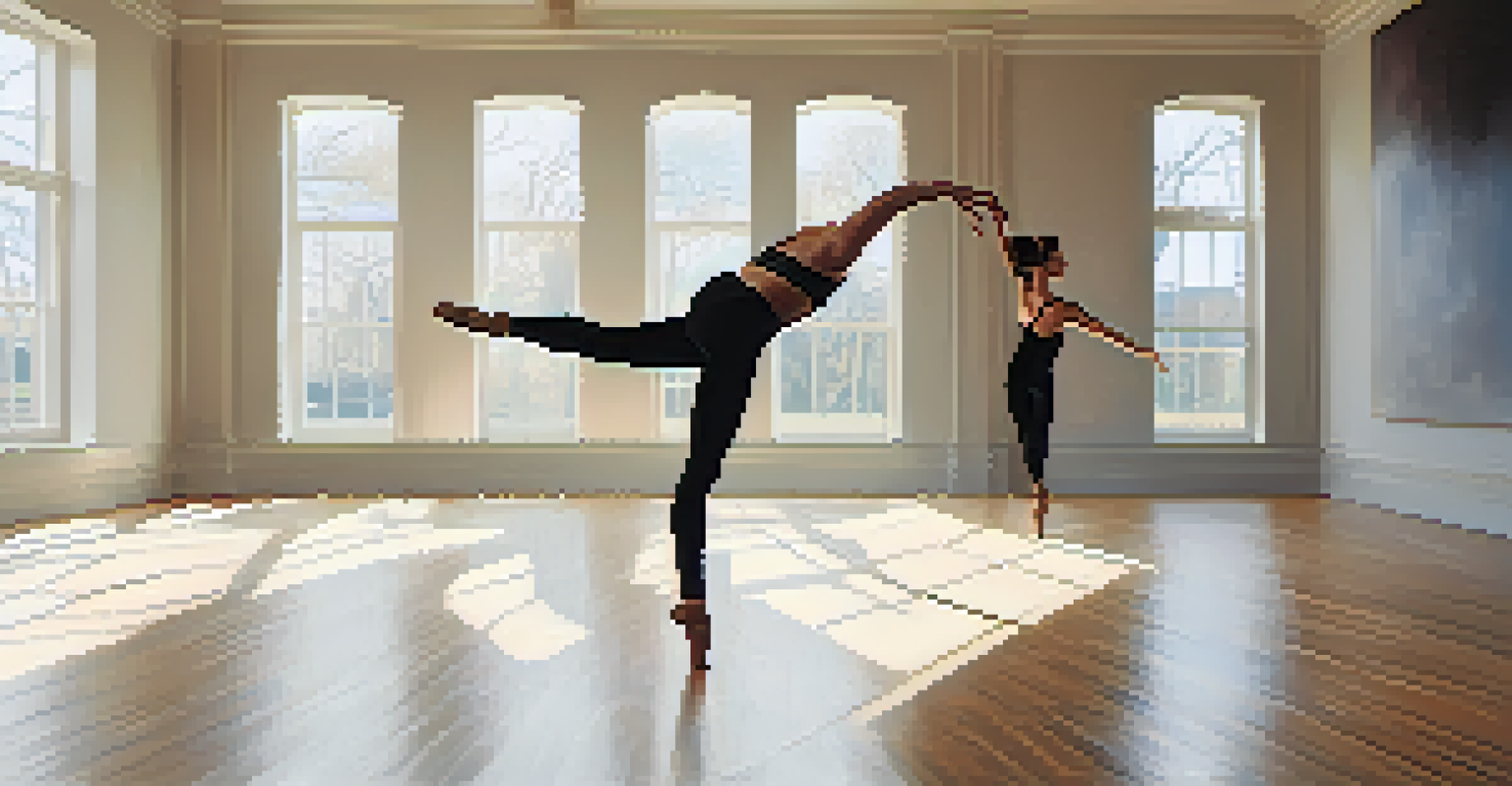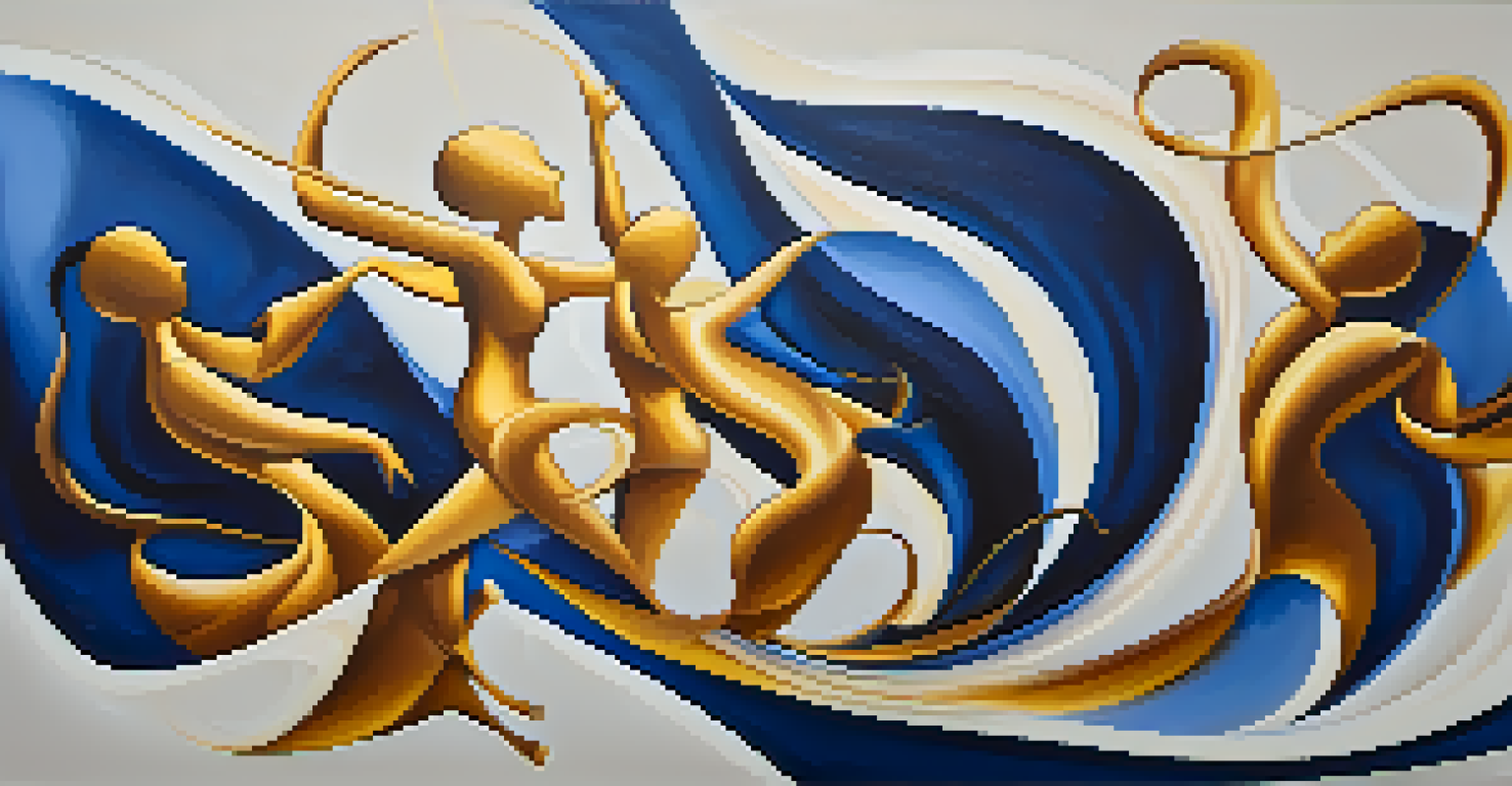Exploring the Symbiotic Relationship Between Dance and Music

Understanding the Essence of Dance and Music
Dance and music have been intertwined for centuries, creating a powerful form of expression. At their core, both art forms convey emotions and tell stories, often sharing a common rhythm. When a dancer moves, they embody the music, translating sound into motion with grace and fluidity.
Dance is the hidden language of the soul.
This relationship is not merely coincidental; it’s a symbiotic one. Music provides a backdrop that enhances the emotional weight of dance, while dance visualizes the auditory experience, allowing the audience to feel both simultaneously. Together, they create a multi-sensory experience that elevates performances to an art form.
Think of it like a conversation between two friends. Each one shares their thoughts and feelings, influencing the other’s response. In the same way, dance and music dialogue with each other, inspiring creativity and innovation in performance.
The Historical Roots of Dance and Music
Throughout history, dance and music have coexisted in various cultures, playing integral roles in rituals, celebrations, and storytelling. From ancient tribes performing tribal dances accompanied by drums to the elegant court dances of the Renaissance, these art forms have evolved together. Their historical partnership reflects society’s cultural values and traditions.

For instance, in many African cultures, dance is a crucial part of communal life, intertwined with drumming and singing. Each movement tells a story that resonates with the music's rhythm, showcasing the importance of this relationship in expressing cultural identity. This highlights how music and dance can serve as historical archives, preserving the essence of a community.
Dance and Music: A Symbiotic Bond
Dance and music work together to create a multi-sensory experience that conveys emotions and tells stories.
As we explore these historical roots, we see that the connection between these two forms of expression has shaped civilizations and continues to influence contemporary art. They are not just art forms; they are vessels of history, culture, and emotion.
The Role of Rhythm in Dance and Music
Rhythm is the heartbeat of both dance and music, serving as the foundation upon which performances are built. Without rhythm, music would lack structure, and dance would lose its flow. It’s the pulse that guides dancers' movements, allowing them to synchronize with the music and each other.
Music can change the world because it can change people.
When dancers feel the rhythm, they respond instinctively, creating movements that resonate with the beats and melodies. This natural connection enhances the overall performance, making it a captivating experience for the audience. Imagine a ballet dancer elegantly pirouetting as the music swells; each spin is perfectly timed with the rhythm, creating a breathtaking spectacle.
Moreover, different genres of music offer varied rhythms that inspire distinct dance styles. From the sharp beats of hip-hop to the smooth tempos of waltz, the rhythm shapes not only how a dancer moves but also how they interpret the music. This interplay keeps the relationship dynamic and ever-evolving.
Expressing Emotions Through Dance and Music
Both dance and music are profound means of emotional expression, allowing artists to convey feelings that words sometimes cannot. A soulful violin piece can evoke sadness, while a lively salsa tune might inspire joy and excitement. Dancers translate these emotions into movement, making their bodies the medium through which feelings are expressed.
For example, a contemporary dancer might use fluid movements to express longing or grief, mirroring the melancholic strains of the music. Conversely, a high-energy dance like breakdancing can radiate joy and empowerment, reflecting the upbeat tempo of the accompanying track. This emotional synergy captivates audiences, drawing them into the narrative being told.
Cultural Celebrations Unite Communities
Cultural festivals showcase the deep connection between dance and music, highlighting community identity and heritage.
Ultimately, the collaboration between dance and music creates a profound emotional experience. Each art form amplifies the other, allowing for a more nuanced and layered expression of feelings that resonates deeply with viewers.
The Influence of Technology on Dance and Music
In our modern world, technology has revolutionized the way we create and experience dance and music. Digital tools allow artists to blend genres, experiment with sounds, and choreograph intricate movements that were once impossible. The rise of electronic music has transformed dance styles, giving birth to new forms like dubstep dancing.
Moreover, technology enables performance accessibility, allowing audiences worldwide to witness dance and music collaborations through platforms like YouTube and social media. Virtual performances and live-streaming have expanded the reach of artists, creating global communities united by a shared appreciation for these art forms. This digital age fosters creativity and collaboration across borders.
However, it's essential to balance technology's influence with the authenticity of live performance. While digital mediums enhance creativity, nothing quite compares to the energy of a live dance performance accompanied by musicians. This blend of old and new showcases the evolving nature of the dance-music relationship.
Dance and Music in Cultural Celebrations
Cultural celebrations often highlight the powerful connection between dance and music, showcasing the unique identity of different communities. Festivals around the world feature vibrant performances where traditional music and dance come alive, creating a rich tapestry of sound and movement. These events foster a sense of belonging and pride, as participants celebrate their heritage.
Take, for instance, the colorful revelry of Carnival in Brazil, where samba music and dance electrify the streets. The rhythm of the drums and the energy of the dancers create an infectious atmosphere, drawing everyone into the festive spirit. Such events highlight how dance and music can unite people, transcending language and cultural barriers.
Technology Transforms Art Forms
Modern technology enhances creativity in dance and music, enabling innovative collaborations and expanding audience reach.
In essence, cultural celebrations serve as a reminder of the deep-rooted bond between dance and music. They encapsulate the stories, values, and traditions of communities, reinforcing the importance of this symbiotic relationship in preserving cultural identities.
The Future of Dance and Music: A Collaborative Journey
As we look ahead, the future of dance and music appears brighter than ever, with endless possibilities for collaboration and innovation. Artists are continually pushing boundaries, experimenting with new sounds, styles, and technologies. This creative spirit promises to keep the relationship between dance and music dynamic and exciting.
Emerging genres and hybrid styles are already reshaping the landscape, allowing for unique collaborations between musicians and dancers. For example, contemporary choreographers often work closely with composers to create original scores that enhance the storytelling aspect of their performances. This collaboration not only elevates the art forms but also introduces fresh perspectives and ideas.

Ultimately, the future of dance and music is a journey of exploration and connection. As artists continue to collaborate and innovate, the bond between these two art forms will only strengthen, enriching our cultural landscape for generations to come.